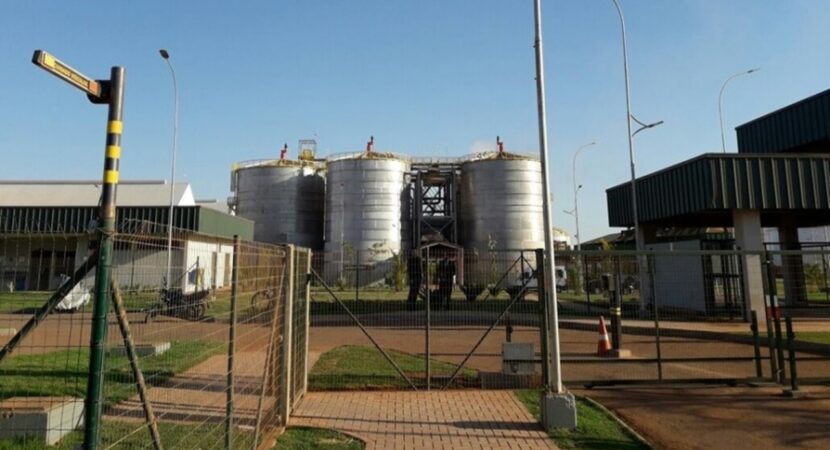
Price and exchange rate lead mills to reduce ethanol production and manufacture more sugar – which had much higher remuneration
Sugarcane ethanol plants in south-central Brazil saw their production plummet due to circulation restrictions caused by the coronavirus crisis and resorted to sugar production. Find out, the Direct sale of ethanol from plants will stimulate competition and curb the increase in gasoline prices at gas stations
Read also
- Raízen, Brazil's giant ethanol producer, invests BRL 345 million in agricultural fleet to increase production and reduce costs
- Ethanol price reacts at plants and distributors after consecutive falls
- Brazil, the world's leading ethanol producer, can profit from India's 20% blending of ethanol in gasoline
- Ethanol and gasoline prices soar, Petrobras increases CNG by 39% and readjustment could further impact Brazilians' pockets in the coming weeks
The 2020/21 sugarcane crushing harvest reached 605,4 million tons (the third highest volume in the last ten years), which represents 2,56% more than the 590,36 million tons of the 2019/20 harvest. The total number of plants in operation until this week should reach 170, compared to 180 in the same period last year.
High exports and good sugarcane prices increase sugar production
With more attractive cane prices, a larger portion of the input was destined to manufacture sugar, whose production reached 38,46 million tons. The volume of ethanol was 30,37 billion liters, including anhydrous (which is mixed with gasoline before reaching the gas stations), hydrous (sold directly at gas stations) and fuel from corn —which reached 2,57 billion. In the last harvest, the offer was 33,25 billion liters, a historical record for the sector.
Despite most of the sugarcane (53,9%) being used to produce ethanol and the other 46,07% being used to manufacture sugar, the difference fell in relation to the past harvest, reaching the lowest percentage in the last 23 years.
“The issue of the exchange rate and pricing made sugar pay much higher than ethanol, but ethanol wasn't bad either. We faced a difficult year, but the harvest was a record, we never had the quantity of products offered in this harvest in relation to ATR [Total Recoverable Sugars], in addition to almost two tons of sugarcane more per hectare”, said Antonio de Padua Rodrigues, technical director of Unica (União da Indústria de Cana-de-Açúcar).
The harvest reached 144,72 kilograms of ATR per ton of cane, compared to 138,57 kilograms in the 2019/20 harvest, which represents 4,44% more and the highest in history.
The reference price for a ton of sugarcane at Consecana (Council of Sugarcane, Sugar and Ethanol Producers of the State of São Paulo), for example, is over R$110. “No one can complain about pricing. Both sugar and ethanol, to have good sugarcane prices, I need good sugar and ethanol prices,” he said.
Strong increase in hydrous ethanol exports
There was also a strong increase in exports of hydrated ethanol, of 137%, to be used for non-fuel purposes —such as 70% alcohol or gel alcohol, in the fight against the new coronavirus pandemic. For the domestic market, the sale of ethanol for non-fuel purposes rose 30%.
“In general, if there was a reduction due to the mobility of both gasoline and anhydrous and hydrous, there were compensations with these new segments, which meant that the crop ended up in balance between supply and demand.”
Sugarcane mills and suppliers are arm-wrestling over the sharing of carbon credit revenues from the federal RenovaBio program
Ethanol plants and sugarcane suppliers are dueling over the sharing of revenues from carbon credits from the federal RenovaBio program, the Decarbonization Credits (CBios). Despite the program that has been in effect for a year, obliging distributors to buy CBios from biofuel producers, the rules for sharing this revenue are the responsibility of private agents, who do not reach a consensus.
The Organization of Associations of Cane Producers in Brazil (orplana) demands that farmers be paid 100% of the CBios generated from ethanol made from sugarcane, given that, if the mills stop processing the supplier's sugarcane, the production of eligible ethanol for the program also decreases, which reduces the mills' ability to issue CBios in equal proportion.













Real amateur, doesn’t understand anything about geography…
The report only covered the subject superficially…
Good article, but I miss certain…
Every bid starts with a specific direction…
The difference that the Western factory wars,…
I want.
Anyone who thinks this tank is good can only…
I have a C4 Cactus Fell Pack, car…